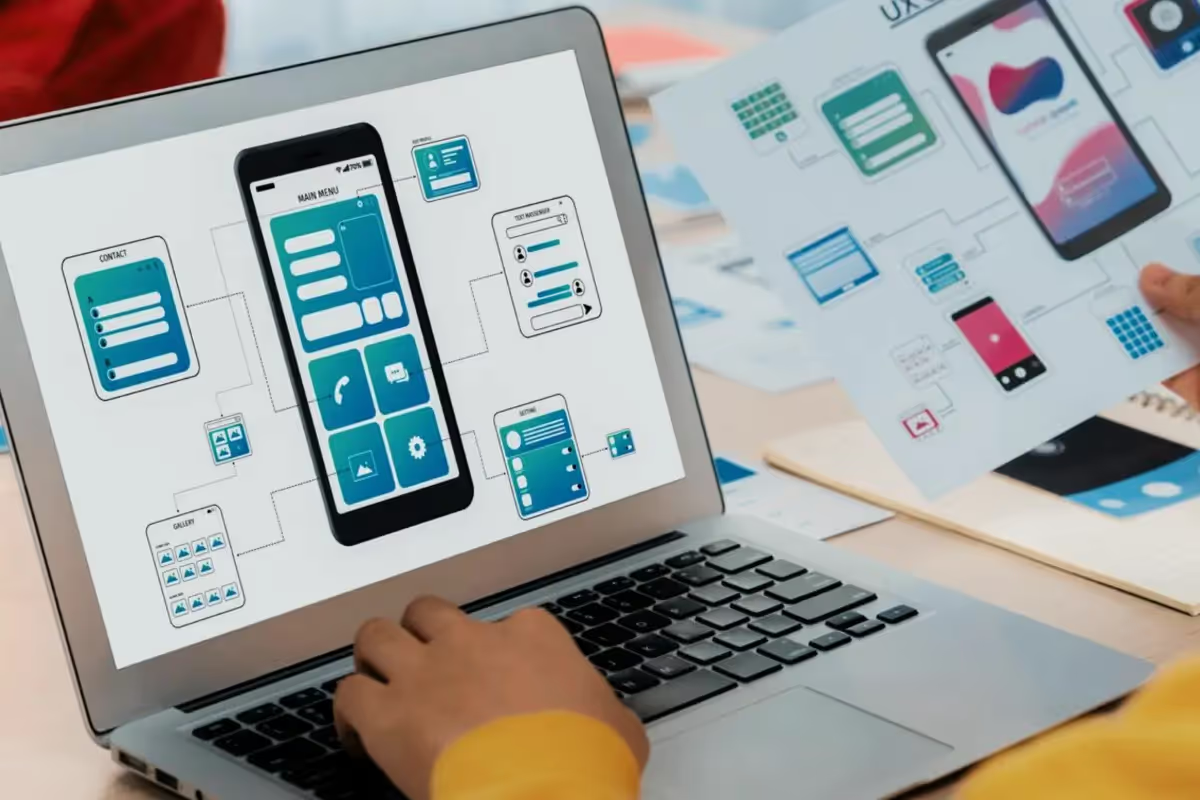On-demand delivery apps are undergoing a boom. On-demand delivery companies like Uber, Bolt, and Lyft have more than doubled their income during the pandemic. According to Statista.com, revenue for platform-to-consumer delivery is now $70,741 Million. Even before the coronavirus, experts expected 8.2% growth annually.
With on-demand delivery apps, people have 24/7 access to a whole host of professional services and goods. Food, clothes, maids, dog walkers are just one click away. What's more, user penetration of on-demand delivery apps is now 9.5%, and spending is growing for these apps across various industries. Quite impressive, isn't it?
As a Project Manager with 5+ years of experience in app development of different complexities and different industries, I’ve had a chance to work with the food-delivery domain closely, on the Eatable case in particular. I know exactly what it takes to build an on-demand delivery app that makes a statement.
If you still have doubts about whether you need to build an on-demand app, keep reading. In this article, we highlight the benefits of on-demand delivery apps from the business perspective, use cases, core features, and explain how to build an on-demand delivery app that meets users' expectations.
What Is On-Demand Delivery App?
As we all live in a digital world with smartphones in our hands 24/7, there's a 100% possibility that you have used an on-demand delivery app at least once. Booking a hotel, ordering food, ridesharing – all these are on-demand services.
App for delivery is an app that allows you to order any service and provide it to you only on demand. Everything is that simple. One tap — and you order whatever you need. In most cases, there are 2 sides of the on-demand application:
- #1 side is the user base who demand the services;
- #2 side is an enterprise or another user base of service providers who accept the request and complete it;
Let's figure out what benefits a delivery service app can bring to your business.
Top 3 Benefits of On-Demand Delivery App Development
The main benefits of developing an on-demand delivery app for your business are:
Costs Reduction
The on-demand delivery app development process can save a lot of money on operational costs as it involves cutting-edge technologies with less human resources engaged. Also, the on-demand delivery app can act as a marketing tool so that you can save money on business promotion.
Simplified Process
An on-demand delivery app is a win-win for everyone. For customers, it's an ability to place an order exactly when they need to. And a contractor delivers the goods all through a phone, and it optimizes the process significantly.

Business Opportunities
Delivery apps can open new opportunities and possible streams for revenue that would otherwise not be accessible to your business. During the current quarantine, delivery apps have seen a boom in orders as they bring the outside world to the customer. In a way, the on-demand delivery app remains cost-effective and provides a high ROI over the period.

On-Demand Delivery App Types
We all know package delivery services like Uber and Glovo as the rock stars of the on-demand delivery app development market. However, this industry is way more diverse than it may seem. Let'sLet's check 3 most common types of on-demand delivery apps with the examples:
Business to Business (B2B)
B2B on-demand delivery apps connect one business to another with the fast on-demand service of a customer-facing app. But expectations have rised. A study by Project44 found that 94% of business buyers expect the same level of customer experience and satisfaction as when they’re have with a B2C on-demand delivery purchase. Some of the on-demand delivery companies that have stepped up to fill this market include:
- Metro
- Instacart
- Bolt
The B2B component of Bolt offers same-day deliveries and multiple drop-offs in a single run. It's estimated that B2B eCommerce will be worth $1.8 trillion by 2023, so building an on-demand mobile delivery app for a slice of that market is a good prospect.
Business to Consumer (B2C)
B2C on-demand delivery apps facilitate goods or services directly from providers to their customers. These can be apps for delivery that serve single providers like a specific restaurant selling their own food, or a multitude of providers on offer from a single platform, like:
- UberEats
- Deliveroo
- Seamless
- Horizon
These on-demand delivery services apps significantly cut their costs and can come with an in-built customer base from partnering with known brands. The business to consumer market is expected to continue growing by 8.2%. While most revenue is still generated in China for this market, it is rapidly expanding internationally, with the coronavirus being a significant driver.

Person to Person (P2P)
P2P is an increasing portion of the on-demand delivery service market. These allow individuals to make transactions through a convenient platform. The apps provide a sense of security in person to person transactions. The big names in this sector include:
- Glocalzone
- WunWun
- Local Guddy
Glocalzone is a particularly innovative on-demand application. It connects people traveling with customers aiming to buy a product from a different country. Travelers can make some extra cash, and the purchaser cuts down on the expense of importing hard to find goods. It quickly reached over 100K users, despite being a niche area of the on-demand package delivery market.

Industries of On-Demand Delivery App
On-demand delivery apps are good for a lot more than just delivering your take-out. They'veThey've set a standard for ease of use and convenient customer experience. Customer expectations have risen, so this standard is expected from a lot of different industries and businesses. These are some of the industries that currently have on-demand delivery apps:
Goods Delivery
Goods delivery is the largest driver of revenue in on-demand delivery, focusing on speed and experience. Some of the biggest on-demand apps for goods are Postmates and UberEats. The revenue from Uber-like delivery services is expected to hit $161.74 billion by 2023.
UberEats has seen 64% growth in recent years. This is driven in part by its international market share and exclusivity deals with well-known restaurants.
Check out our guide on building food delivery app.
Healthcare
On-demand delivery startups are becoming more widespread in healthcare, like Doctors on Demand and Pager. Telemedicine allows customers to see a doctor as easily as they would order a Big Mac, so doctors can examine, diagnose and treat patients just using video calling from their phone. Healthcare is estimated to be worth $52.2 billion by 2026.

Professional Services
On-demand delivery apps work effectively for personal services. TaskRabbit, Merry Maids, and Slate are good examples of how platforms have flourished by connecting professionals with customers. Rover is an app for finding dog walkers and sitters. They managed an aggressive 575% year on year revenue increase early in life by disrupting the industry.
Logistics
Logistical on-demand delivery apps are rapidly growing. Uber Freight, an on-demand and long-haul delivery service has seen a fast expansion. The company is booming, seeing great results by sharing the vast majority of its revenue with carriers. Uber Delivery similarly is an on-demand package delivery service that is seeing modest growth. The on-demand logistics market is expected to hit $75 billion by 2030.
Taxi Services
Taxi services might be the most well-known on-demand apps. You open up your phone, it knows your location, you enter where you're going, get a price, and get a ride, quick and easy. The leading names in on-demand cars are Uber, Bolt, and Lyft. Uber and Lyft dominate this market, but individual taxi firms have seen success in launching their apps.

How to Make an On-Demand Delivery App Without Code
An on-demand delivery app can completely change the way you do business and open up some great new revenue streams. So how to develop on-demand delivery app?
Use App Delivery Builder
Thankfully, you don't have to spend the next five years mastering C# coding or the nuance of UI design. Finding professionals with the right skills or using an on-demand delivery app builder can be a very affordable investment to enter this market. This is an effortless way that suits a small budget, but the result is rewarding. Note, with an on-demand app builder, it won't be easy to scale an app.

Find a Freelancer
Finding a freelancer who knows how to build an on-demand delivery app is another option for making your app without writing a line of code. The downside of this method is that it does require quite a bit of management and time while hiring. This is an excellent option if you're trying to keep your budget under $10K.
Hire an Outsourcing Company With Expertise
Hiring an outsource company is the most efficient way to build your on-demand delivery app if you're looking to keep your costs at a minimum and get things done by a strict timeline.
By outsourcing, you get a team of app developers with expertise in building an on-demand delivery app. This method gives you the same quality and experience as hiring an entire in-house department for app development, but at a fraction of the cost. An outsourced team also allows you to scale considerably easier.
Building an On-Demand Delivery App: Best Practices
The market for on-demand apps is tough. So, making your on-demand delivery app, you should ensure it stands the test of competition and time. You should do thorough homework or research to get your competitive edge. Here’re 3 steps that you should take before plunging into on-demand app development:

Meet your user
You can only build something compelling if you meet your users and talk to them. The best way to do this is by running a user interview asking about their needs, goals, and obstacles. As a result, you will have a User Persona which will embody your average user. Knowing your user like your friend will give you the insights that, if used right, can give your app a competitive boost.
Analyze your competitors
Not only should you meet your user as a friend. You should also know your competitor in the eye. Analyze the leading and secondary players of the market on how they:
- position themselves;
- make money;
- suggest a unique benefit to their users.
During such comparative research, you’ll detect the market gaps that can eventually turn into an unoccupied niche, which you can fill in.
Provide a solution
At this point, you know the concerns of your users and which solutions there are on the market. That’s a lot of helpful information you can use for your benefit. Get your creative team together to brainstorm the perfect solution to the user’s problem that no one has yet offered.
Or, as an alternative, you can offer the same solution but with an exceptional customer experience.
At Uptech, we usually run these three steps during the Discovery. This is a critical stage where we validate the ideas that come along instead of mindlessly copying competitors.
Read more about the Discovery stage at Uptech in this article.
Making an On-Demand Delivery App: Core Features
Before starting the on-demand app development you should take a while to define the core features. The first thing you should remember is tostart with the basics. You don't need to implement the most popular features, like in-app messenger or personalized recommendations,right away. The truth is some features are a must, and some are just nice-to-have. Focus on the most crucial and add the rest a bit later.
Your future food delivery app should keep the user at the center of the app flow. So, before implementing each feature, think of how it affects the whole experience. To help you with the decision, here's the list of core features for food delivery app like Uber must have:
- Registration;
- Search;
- Order placing and checkout;
- Order tracking;
- Safe payment;
- Ratings and Reviews;
- Notifications;
If you have an idea to build a delivery app, going through the list is a bit overwhelming. It’s best to leave that to IT professionals that are building the app for you.
On-Demand Delivery App Cost
The price of your future on-demand delivery app depends on several factors:
- number of features;
- number of platforms;
- integration of additional services (market research, design solutions, etc.)
An approximate cost of a food delivery app like Uber may vary from $75K to $150K. But again, a detailed estimation requires more information about the project, so we will be able to show you precise figures.
A Short Story on How Uptech Made an On-Demand Delivery App – Sprent
Sprent is an on-demand delivery app that allows users to safely and quickly purchase just about anything for sale in their city. Android or iOS app users can simply pick a category and have it delivered by the courier team in a matter of minutes.

To build the app, we conducted a lot of market research with the Spent team to get a great understanding of customers and their needs. Uptech team designed, tested, developed, and released all needed features for the app on time.
The app's final version included all of the must-have features for a food delivery app, providing a simple way to order just about anything, track the delivery, and securely pay.
As a result:
- Sprent was featured by Apple as the 1st app to launch Apple Pay in Saudi Arabia.
- Spring is the best startup in the Logistics category by GESALO.
- Sprent has 10K monthly active app users.
Currently, we keep an eye on analytics, focus on users' feedback and work on scaling the product.
.webp)
Checklist to On-Demand Delivery App Development
So here is our checklist to make sure your project goes as well as the case study above.
- Start With Market Research - Your market research is vital for finding out just what your app needs to offer customers.
- Define Competitors - Figuring out who your competitors are will help you develop a plan for building a better app.
- Analyze Your Target Audience - Your on-demand delivery app has to be built to suit your target audience and what they want.
- Create Proto-Persona - This is a customer archetype that you can use to measure how your app is shaping up. A proto-persona allows you to test how your work is being done against your expectations of your customer base, that is built from the research.
- Create CJM - A customer journey map makes sure you’re keeping the customer experience completely central.
- Pick Features for MVP - While having a lot of features is good, you need to prioritize and find those that are more important.
- Choose the Tech Stack - Choosing a tech stack is going to simplify the entire process for developing your app and finding the right developers.
- Find a Team that has Experience - If you’re not experienced with app development, then you need a team that is.
- Collect Analytics - This is vital information about the way your app is used, which can inform where your app needs improvement.
- Receive Feedback from Users - User feedback shows that you are listening to your customer base and making efforts to improve anything they don’t like. Doing this can help you build loyalty and establish a customer base that trusts your platform.
- Scale the Product Based on Users’ Feedback - Scale around what users want to keep that customer experience central.
Summary
The on-demand delivery app market is seeing an incredible growth in many different industries, from healthcare to logistics. Developing one gives you a competitive advantage over others. However, building an on-demand application requires a lot of programming knowledge and experience. There are ways for you to enter this market fast. You may hire a freelancer, use a builder, but, for many, the best solution is to work with an experienced outsource company. It allows you to save time and not to worry about the quality.
Having ample experience building complex products, we know how to make an on-demand delivery app that boosts your income. If you need professional consultation or looking for a dedicated partner to help you build an on-demand app, drop us a line.
























































































.avif)











